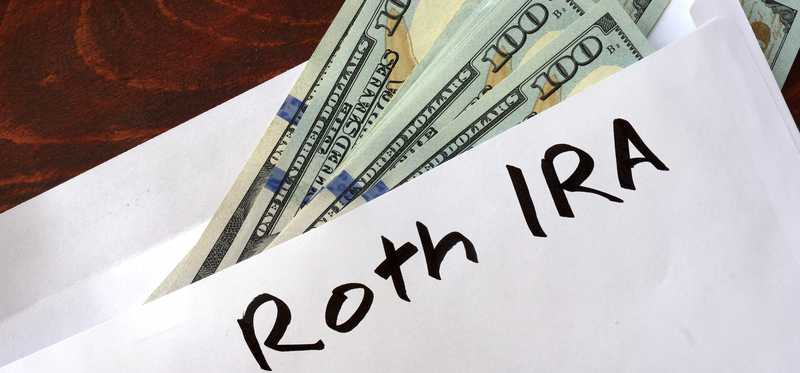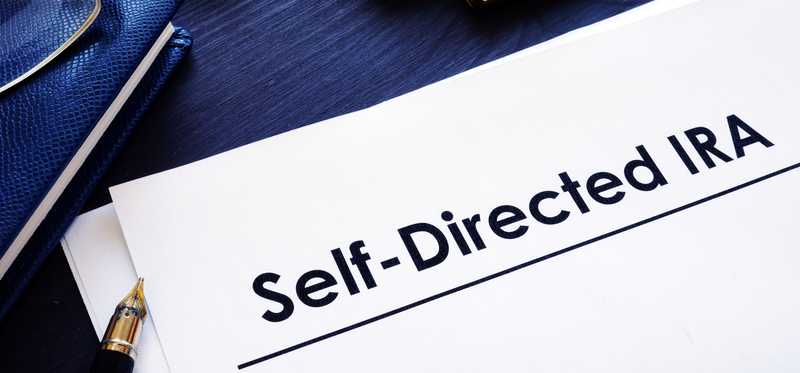12 Investing Strategies to Grow Your Retirement Savings

12 Investing Strategies to Grow Your Retirement Savings
Build your retirement savings faster
It's easy to fall flat on ways to maximize retirement savings. Hands-off investment strategies like investing in a mutual fund or index fund often lead the way when it comes to growing a retirement account, but they are hardly the only way. If you're looking for alternative ways to maximize your retirement savings and grow a sizable retirement account, here are 12 investing strategies to consider.
5 Stocks Under $49
Presented by Motley Fool Stock Advisor
We hear it over and over from investors, “I wish I had bought Amazon or Netflix when they were first recommended by The Motley Fool. I’d be sitting on a gold mine!" It's true, but we think these 5 other stocks are screaming buys. And you can buy them now for less than $49 a share! Click here to learn how you can grab a copy of “5 Growth Stocks Under $49” for FREE for a limited time only.
Previous
Next

1. Start saving
In order to create retirement savings, you have to first save money. If you're not already setting money aside for retirement, now is the time to start. The earlier you start saving and investing, the less money you will personally need to save for your retirement years because your investments will grow your retirement savings for you. Plus, you'll likely have more money when it comes time to retire.
The goal is to save around 20% of your income. But if that's not possible with your current income and expenses, start setting aside as much as you can, even if it's just 1% to 5% of your income. Over time, slowly increase how much you save as your salary grows or expenses decrease.
Previous
Next

2. Open an IRA
An individual retirement account (IRA) can be an extremely powerful tool to help fuel your retirement savings because it offers a tax shelter for your savings in one of two ways. A traditional IRA allows you to contribute up to $6,000 per year if you're under the age of 50, or $7,000 if you're over 50, tax free, paying taxes on the account when it's withdrawn in retirement. A Roth IRA has you pay tax on money contributed today, allowing your IRA savings to grow tax free.
Unfortunately, IRAs aren't available to everyone. Qualified individuals and contribution limits are determined by income and age, but for Americans earning $144,000 or less as a single filer, or joint filers who earn $214,000 or less, an IRA can be a great retirement account.
Previous
Next

3. Max out your company's 401K
If you are employed at a company that offers a 401K, find out how the plan works. Some 401K plans have a matching program in which the employer will match your contributions to the 401K. This can exponentially increase how much you save without having to increase your personal savings.
Even if the matching isn't one-to-one, the program may match up to a percentage of your savings, and even a small portion is better than none.
Previous
Next

4. Self-employed? Open a solo 401K
If you are self-employed and don't have an employee 401K plan to participate in, you can open a special retirement account called a solo 401K. Solo 401K plans, like IRAs, can be either traditional, where contributions are made tax free today, or a Roth, where income is taxed the year it is contributed.
Contribution limits for a solo 401K are much higher than an IRA, with no income qualifications. Individuals under 50 can contribute $61,000 and those 50 and older can contribute up to $67,500 per year. This is a great plan for self-employed individuals who earn a large income, but the caveat is that you can't have full-time employees.
Previous
Next

5. Consider a self-directed IRA
In addition to a standard IRA account, investors have the opportunity to open a self-directed IRA, which allows you to direct your retirement dollars into alternative investments including investing in real estate, businesses, or cryptocurrency, to name a few. Coming in both Roth and traditional options, this can be another retirement savings account that follows the same contribution limits as a standard IRA.
5 Stocks Under $49
Presented by Motley Fool Stock Advisor
We hear it over and over from investors, “I wish I had bought Amazon or Netflix when they were first recommended by The Motley Fool. I’d be sitting on a gold mine!" It's true, but we think these 5 other stocks are screaming buys. And you can buy them now for less than $49 a share! Click here to learn how you can grab a copy of “5 Growth Stocks Under $49” for FREE for a limited time only.
Previous
Next

6. Open a health savings account
If you have a high-deductible healthcare plan, take advantage of it through a health savings account (HSA). This special savings account allows you to contribute as much as $3,650 for single coverage individuals and up to $7,300 per year for family coverage plans, on a pre-tax basis.
The funds can be used to pay for qualified medical expenses, which can include everything from basic doctor visits to major medical emergencies like surgery. While the annual contribution amounts are huge, over time and with careful investing, this can grow to be a sizable health savings nest egg during your retirement years.
Previous
Next

7. Invest in the stock market
As you've seen, there are so many vehicles to hold and shelter your savings, but investing your savings is what really makes your savings grow. Over the past 50 years, the stock market has returned an average of 10% per year. Assuming the average historical return stays the same for the next 50, investing in the S&P 500 index, a $6,000 retirement account that continued to have an additional $6,000 added to it per year for 30 years would eventually become $763,480.
Previous
Next

8. Choose individual stocks
An index fund is a super easy way to invest. If you're limited on time and are happy with a 10% return, then this is a great avenue to grow your retirement. But you can earn a lot more by investing in individual stocks or real estate investment trusts.
Previous
Next

9. Invest in real estate
Real estate can be a wonderful complementary investment to the stock market that can produce cash flow or passive income today, while also building equity and savings for the future. Rental real estate in particular is a great way to diversify your portfolio and boost your savings for your retirement years. Owning a rental or investment property in your own name is fine, but don't forget to utilize those tax shelters. By investing through a self-directed IRA, any earnings from the investment are tax free.
Previous
Next

10. Revise your budget
If you aren't happy with how much you have available to save for retirement right now, consider revising your budget and spending, trimming fat to help contribute more to your future. Even a small percentage increase can make a notable difference in your retirement accounts over time.
5 Stocks Under $49
Presented by Motley Fool Stock Advisor
We hear it over and over from investors, “I wish I had bought Amazon or Netflix when they were first recommended by The Motley Fool. I’d be sitting on a gold mine!" It's true, but we think these 5 other stocks are screaming buys. And you can buy them now for less than $49 a share! Click here to learn how you can grab a copy of “5 Growth Stocks Under $49” for FREE for a limited time only.
Previous
Next

11. Automate saving for retirement
Saving is always easier when you don't have to think about it. It's why 401K plans that withdraw contributions from employees' gross salaries often lead to higher contribution rates than those that leave it to employees to contribute. Have an automatic transfer set up each time you get paid, to automatically contribute to your desired retirement accounts. You'll never miss the money since it will happen simultaneously with your paychecks, but your retirement savings will grow.
Previous
Next

12. Max out your retirement accounts
Most retirement planning focuses on having one or two accounts set aside for retirement savings, but contribution limits can slow the rate at which these savings grow. To truly maximize your retirement potential, consider having multiple accounts, which can be a self-directed IRA, HSA, 401K, solo 401K, or standard IRA. This could be the difference between putting $6,000 away each year to potentially putting $15,000 or more away each year. While it may be more to manage, it also allows you to save more and hopefully grow more from your savings
Previous
Next

Don't put it off
Time can either be a friend or foe. Investing earlier, no matter how small your savings account may be when you start, will always put you ahead of those who start later. It's definitely easier to use your money today, but your future self 20 to 40 years from now will surely thank you for the effort and dedication you put into your retirement today. If you feel like you're getting a late start, don't fret. Just start saving and investing, and make sure to take advantage of catch-up contribution limits if applicable.
The Motley Fool has a disclosure policy.
Previous
Next
Invest Smarter with The Motley Fool
Join Over Half a Million Premium Members Receiving…
- New Stock Picks Each Month
- Detailed Analysis of Companies
- Model Portfolios
- Live Streaming During Market Hours
- And Much More
READ MORE
HOW THE MOTLEY FOOL CAN HELP YOU
-
Premium Investing Guidance
Market beating stocks from our award-winning service
-
The Daily Upside Newsletter
Investment news and high-quality insights delivered straight to your inbox
-
Get Started Investing
You can do it. Successful investing in just a few steps
-
Win at Retirement
Secrets and strategies for the post-work life you want.
-
Find a Broker
Find the right brokerage account for you.
-
Listen to our Podcasts
Hear our experts take on stocks, the market, and how to invest.
Premium Investing Services
Invest better with The Motley Fool. Get stock recommendations, portfolio guidance, and more from The Motley Fool's premium services.